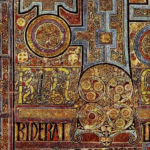
Manifestation of God and the Relativity of Religious Truth
 In this series of articles the term “messengers” or “prophet” is generally the one used when referring to figures such as Bahá’u’lláh, Buddha, Jesus or Muhammad. Yet such terms are inadequate, as the previous article, on the Word of God, illustrated.
In this series of articles the term “messengers” or “prophet” is generally the one used when referring to figures such as Bahá’u’lláh, Buddha, Jesus or Muhammad. Yet such terms are inadequate, as the previous article, on the Word of God, illustrated.
The exact nature of the prophetic figure has indeed been a point of disagreement within and between religions. As we might expect, given Bahá’u’lláh’s focus on unity, Bahá’u’lláh introduces ideas that open a pathway for overcoming differences around this question. It is essential to be able to be able to develop a common language that bridges the theological differences between religion. As we saw, the Kitab-i-Iqan (Bahá’u’lláh’s Book of Certitude), contains this potential. Among the insights Baha’u’llah gives us is the following:
When I contemplate, O my God, the relationship that bindeth me to Thee, I am moved to proclaim to all created things “verily I am God!”; and when I consider my own self, lo, I find it coarser than clay![1]
All the disagreements among human beings over the nature of messengers of God boil down to a question of “relativity”. Any statement we can make about religious truth is relative to a particular observer. We can thus affirm more than one truth at the same time — as depending on observer they are equally true. Thus for example, with a Christian, we can affirm “Jesus is God”, for in Jesus we see God, and with a Muslim, we can affirm “Muhammad is but a servant of God”, for God is entirely beyond all material existence.
Shoghi Effendi specifically affirms that a central principle of the Baha’i Faith is that “religious truth is relative”:
It must necessarily conflict with the fundamental principle which constitutes the bedrock of Bahá’í belief, the principle that religious truth is not absolute but relative, that Divine Revelation is orderly, continuous and progressive and not spasmodic or final. Indeed, the categorical rejection by the followers of the Faith of Bahá’u’lláh of the claim to finality which any religious system inaugurated by the Prophets of the past may advance is as clear and emphatic as their own refusal to claim that same finality for the Revelation with which they stand identified. “To believe that all revelation is ended, that the portals of Divine mercy are closed, that from the daysprings of eternal holiness no sun shall rise again, that the ocean of everlasting bounty is forever stilled, and that out of the tabernacle of ancient glory the Messengers of God have ceased to be made manifest” must constitute in the eyes of every follower of the Faith a grave, an inexcusable departure from one of its most cherished and fundamental principles.[2]
The Manifestations of God are thus intimately connected with each other – part of one greater whole that constitutes the faith of the “Lord of all religions”. All the Manifestations come from the same source and progressively build on those who have come before: always speaking relative to the needs of the time and place in which they appear. It is a process that will never end.
Image: The Baha’i ringstone symbol. It is at the same time calligraphy representing the name “Baha” and a representation of reality. The top line represents the World of God, the middle the world of the Word of God, the third the world of creation. The vertical line represents the Holy Spirit binding the three together. The stars represent the twin Manifestations: the Bab and Bahá’u’lláh.
(This article is the 153rd in a series of what I hope will be 200 articles in 200 days for the 200th anniversary of the birth of Bahá’u’lláh. The anniversary is being celebrated around the world on 21 and 22 October 2017, The articles are simply my personal reflections on Bahá’u’lláh’s life and work. Any errors or inadequacies in these articles are solely my responsibility.)







